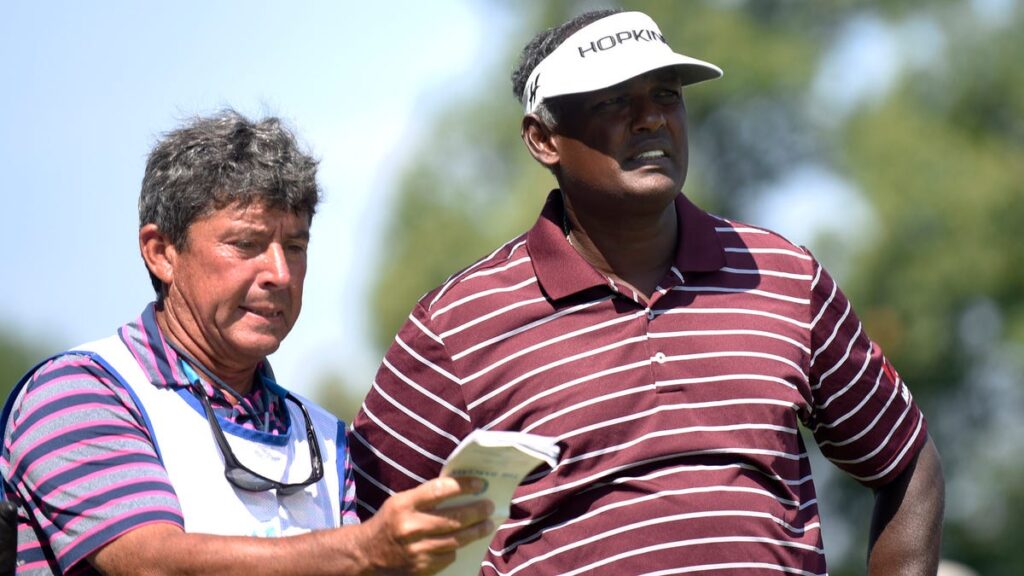Cayce Kerr has seen it all as a PGA Tour caddie for 35 years at more than 1,000 tournaments and over 125 majors. During that time, he has worked for 14 major winners, including nine Hall of Famers and seven former World No. 1s. And he brings a unique perspective to the current debate on whether Distance Measuring Devices should be allowed on the PGA Tour.
That’s because he made an absolute killing wheeling and dealing the devices when they first revolutionized golf nearly 30 years ago.
“I know what it doesn’t do,” he said in a recent phone interview. “It doesn’t slow down play.”
But let’s first back up to the remarkable story of how Kerr became the first person to market a laser or rangefinder on Tour, selling the devices to the likes of Arnold Palmer, Jack Nicklaus and Tom Watson. Kerr details this incredible story and many other tales from his caddie life on the Tour with “Fred, Fuzzy, Vijay, Tiger and more,” in a soon-to-be-published book (June 3) titled “Walking With Greatness.”
Kerr was caddying for Fuzzy Zoeller at the 1995 U.S. Open at Shinnecock Hills when his boss requested a yardage and Kerr simply told him that he was far enough away at the par 5 to just bang 3-wood from the rough. That wasn’t good enough for Fuzzy who wanted a more exact yardage. A spectator near the rope line overheard the conversation and later told Kerr that his Austrian-based company, Swarovski, had a technology that would determine the yardage with a click of a button. Before long, Kerr was invited to company headquarters and struck a handshake agreement for a one-year worldwide exclusive deal for the new golf product. Sandy Lyle was his first customer. Even Charles Schwab, the founder of the discount brokerage company bearing his name, had to have one. Kerr paid $1,000 a pop and marked them up to $3,300.
“Before the year was out,” Kerr writes, “I had sold my entire quota of 350 rangefinders, and my $2,300 profit per item meant I reaped a total profit of more than $800,000 in the 12 months I had the sales rights.”
Distance-measuring devices have become ubiquitous in the years to come, revolutionizing golf from a yardage standpoint by helping players figure out the distance to the pin faster and compute what club to hit.
“It saves steps,” Kerr said. “Just multiply that over 18 holes.”
Kerr isn’t surprised that it has taken the Tour this long to allow players to use them during competition, noting that golf typically moves at a glacial pace when it comes to accepting technology.
“It’s part of the equipment like an umbrella and a Goretex rainsuit,” he said.
Kerr’s book, which includes a foreword by fellow caddie Billy Foster, is a rare insider’s memoir that pulls no punches in portraying life on the Tour. And as he details in “Walking with Greatness,” rangefinders wasn’t the only business this serial entrepreneur would dabble in.
Read the full article here



